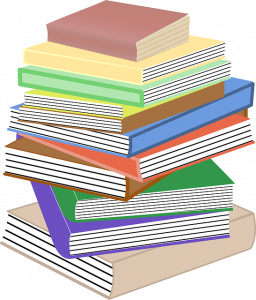15 Chapter 11 C: Getting the Most Out of Your Textbooks
Reading Textbooks: Front and Back Matter

Before diving into every line of text in a textbook reading assignment, it is helpful–and saves time–to find out, first, what resources the entire book has to offer you. Then, as those chapter readings are assigned, it helps to first skim read them for the big picture meaning.
The first exercise in this chapter will help you find all the resources in your textbook–and some textbooks have a lot more help in the front matter and back matter of the text than you may realize. I always think of one student who, when given this exercise to use on any textbook he had with him, picked his math book. He was at that time re-taking that math class because he had failed it the term before. As he did the exercise, he realized the back matter of the book included an answer key for half of the problems for every exercise. “Had I known this last term,” he said, “I would have passed!” See if you, too, find something useful in your textbook that perhaps you didn’t know was there, either.
The Exercises in this chapter cover strategies for skim reading specific chapters and a strategy for getting the most out of graphics included in textbooks.
FRONT MATTER
___Table of Contents
___Preface
___Introduction
___To the Teacher
___To the Student
___Other (list, here): _____________________________________________
BACK MATTER
___Glossary of Terms
___Index of subjects
___Answer Keys
___Additional Exercises
___Additional Readings
___Tables, graphs, charts
___Maps
___Other (list, here): ________________________________________________
Answer the following questions:
- Were there any surprises for you?
- How can you use the front and back matter in your text to help you with your studies? (3 or 4 sentences)
Skim Reading Textbook Chapters
Before doing a detailed reading of a textbook chapter, get the big picture by following these steps:
- Similar to reading the Table of Contents for the entire book, read the Introduction or Chapter Overview, whichever the textbook features, for the main ideas and how they are divided.
- Read the headings and sub-headings.
- Note the graphics (charts, tables, illustrations, etc.).
- Read the first one or two sentences in the paragraphs (the paragraph topic is sometimes covered in more than one sentence).
- Read the last sentence in each paragraph which might be a paragraph summary.
- Read the summary of the entire chapter, if given.
- Read any sentence with boldface or italicized words or word groups in it (usually either key ideas or technical terms).
- Stop when needed if you come across a complicated idea or topic and take a little more time to skim it until you understand it.
- Skim the study questions, too. They will help you focus on key points.
Licenses and Attributions:
CC licensed content, previously shared:
How to Learn Like a Pro! Authored by Phyllis Nissila. Located at: https://openoregon.pressbooks.pub/collegereading/chapter/lesson-3-2-getting-the-most-meaning-out-of-your-textbooks/ License: CC-BY Attribution.
“Books” image by Clker-Free-Vector-Images is in the Public Domain, CC0
“Statistic” image by JuralMin is in the Public Domain, CC0

